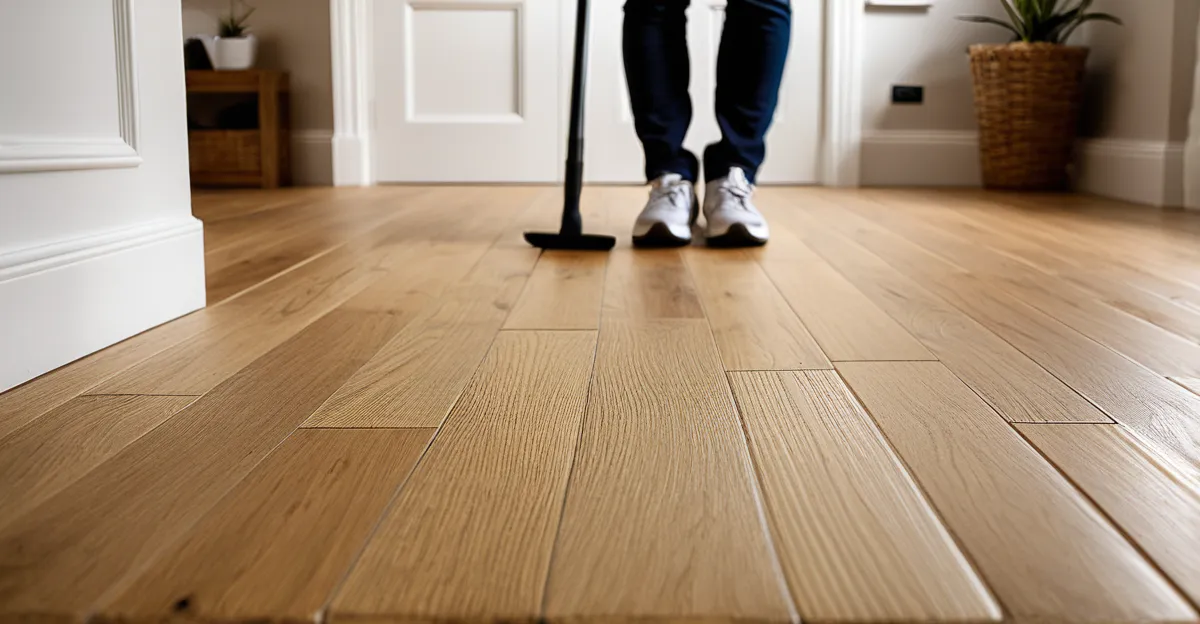Quick guide to choosing the best flooring for each room in UK homes
Selecting the right flooring options UK depends heavily on the specific needs of each room. When choosing flooring, factors like durability, moisture resistance, insulation, and cost must be matched to the room’s function. For example, kitchens and bathrooms require materials that can handle moisture without damage, while living rooms and bedrooms prioritize warmth and comfort.
The UK’s often damp and variable climate heavily influences flooring suitability. Moisture-prone areas benefit from water-resistant flooring options to prevent warping or mould growth. Meanwhile, rooms needing insulation against chills, such as living rooms or bedrooms, call for carpets or engineered wood due to their thermal properties.
Additional reading : What Are the Key Principles for Designing a Cozy Home Environment?
Considering room-specific flooring needs ensures both practicality and longevity. Durable options like tile and vinyl work well in utility areas and hallways, where footfall is high. In contrast, softer surfaces improve comfort where relaxation is key. Balancing these immediate factors enables homeowners to select ideal flooring that suits both their lifestyle and the UK’s unique environmental demands.
Flooring selection for kitchens
Kitchen flooring demands both style and resilience.
In parallel : What Are the Hidden Benefits of Minimalist Living in the UK?
When choosing flooring for kitchens in UK homes, durability and moisture-resistant flooring are paramount. Common options include vinyl, tile, and laminate, each suited to tackle spillages and humidity differently. Vinyl offers excellent water resistance and easy cleaning, making it ideal for busy family kitchens. Tile is robust and highly durable, though it can be cold and harder underfoot. Laminate provides a warm aesthetic similar to wood but must be carefully selected for moisture resistance as cheaper versions may warp when exposed to water.
Maintenance is essential to prolong kitchen flooring life. Regularly wiping up spills prevents staining and damage, especially with laminate. Vinly and tile floors tolerate heavy footfall and frequent cleaning better, which suits the UK’s active households.
Overall, kitchen flooring should balance moisture control with comfort and style. Selecting water-resistant materials that fit your budget and lifestyle needs ensures longer-lasting, practical surfaces that endure daily wear and the UK’s variable moisture levels.
Bathroom flooring recommendations
Balancing waterproofing with safety and style
Choosing the right bathroom flooring UK requires top priority on waterproof flooring options and slip resistance. Bathrooms face frequent moisture exposure, so materials that repel water are essential to prevent damage and mould issues.
Tile and vinyl dominate as popular options. Tiles offer excellent durability and water resistance, but can be slippery when wet and may feel cold underfoot unless paired with underfloor heating. Vinyl provides a softer, warmer feel and typically includes slip-resistant textures, making it a safer choice for families. Engineered products provide stylish alternatives but must be carefully selected for moisture resistance.
Cost varies: tiles tend to have a higher upfront expense and installation complexity, while vinyl is more budget-friendly and easier to maintain. Insulation is another key consideration—tiles are less insulating than vinyl, so enhancing warmth with rugs or heating systems is common in UK bathrooms.
Regular cleaning and prompt drying are crucial in all cases to preserve bathroom flooring and reduce slip risk. Ultimately, selecting waterproof flooring options that match your style, budget, and safety needs ensures lasting performance in UK bathroom environments.
Living room flooring solutions
Light, warmth, and comfort shape living room flooring choices
When selecting living room flooring in UK homes, balancing aesthetics with insulation and durability is key. Popular options include carpet, hardwood, and laminate, each offering distinct benefits. Carpets provide warmth underfoot and help reduce noise, essential for cosy, quiet spaces. Hardwood boasts timeless appeal and durability but can feel cooler and requires maintenance to prevent scratches. Laminate flooring mimics wood’s look at a lower cost and is easier to clean, though it’s less insulating.
How does lifestyle impact choice? For families with children or pets, resilient surfaces like laminate or hardwood may be preferable for easy upkeep. In quieter homes, plush carpets enhance comfort and warmth during colder UK months, a vital aspect given the country’s chilly climate.
Insulation plays a significant role in living room flooring decisions. Carpets naturally improve thermal retention, while hardwood might require underlayments to boost warmth. Sound insulation is also crucial; carpets excel here, whereas hard floors may need rugs.
Choosing the right flooring supports both comfort and style, making the living room a welcoming central space in UK homes.
Bedroom flooring considerations
A key priority in bedroom flooring UK is selecting materials that provide both warmth and comfort, essential for restful spaces. Carpet remains a popular choice due to its soft texture and excellent insulation properties, delivering a cosy feel during chilly UK nights. However, for those seeking a blend of natural aesthetics and ease of maintenance, engineered wood offers a durable, attractive option that adds value while still offering moderate insulation.
When choosing flooring for bedrooms, allergen management is crucial. Carpets can trap dust and allergens if not regularly cleaned, so vacuuming and professional cleaning help maintain air quality. Engineered wood and laminate options are easier to keep allergen-free but might lack the plush comfort some desire.
Cost and upkeep also weigh in: carpets often require more frequent cleaning and eventual replacement due to wear. Engineered wood and laminate might demand refinishing or repairs but generally hold up better over time. Considering these factors ensures selections that promote a tranquil, healthy sleeping environment tailored to UK climate and lifestyle.
Flooring for high-traffic and utility areas
Hard-wearing surfaces for busy UK households
When selecting utility room flooring UK and hallway options, durability tops the list of priorities. These spaces endure heavy footfall, dirt, and moisture, demanding durable flooring options that resist wear and tear. Practical choices often include tile, vinyl, and laminate, each delivering unique advantages.
Tile excels in longevity and water resistance, perfect for areas prone to wet shoes and spills. Its tough surface stands up well to scratches but may feel cold and harder underfoot. Vinyl offers excellent moisture resistance plus a softer feel, making it well suited for utility rooms with frequent water exposure. Laminate provides a cost-effective option with decent scratch resistance but requires careful selection to ensure moisture tolerance.
Cleaning high-traffic areas regularly prevents dirt buildup and maintains appearance. Vinyl and tiles typically allow easier upkeep, while laminate may need prompt spill cleanup to avoid damage.
Balancing durability, comfort, and maintenance needs for hallways and utility rooms ensures flooring choices that endure the demands of active UK lifestyles while sustaining aesthetics over time.
Comparing costs and maintenance across flooring types
Effective budgeting for durable and stylish floors
When assessing flooring cost UK, upfront expenses vary widely by material. Carpets and laminate often offer budget-friendly entry points, while hardwood and tile usually rank higher due to materials and installation complexity. Vinyl presents a mid-range option combining affordability with durability, popular in high-use areas.
Maintenance significantly impacts long-term value. Carpets require regular vacuuming and professional cleaning to prolong lifespan, increasing upkeep costs. Hardwoods need periodic refinishing and gentle cleaning to avoid damage. Tiles and vinyl score well for ease of maintenance—tiles resist stains but grout requires upkeep; vinyl cleans quickly and handles heavy traffic.
Balancing cost-effective flooring choices means factoring in durability alongside initial price. Durable surfaces might cost more upfront but reduce replacement frequency. Understanding daily wear helps determine which flooring suits lifestyle and budget best. For instance, busy households may save on maintenance by selecting resilient vinyl or tile over carpet.
Maintenance tips include prompt spill cleanup and using appropriate cleaning products per material to extend floor life and maintain appearance in UK homes.
Evaluating insulation and eco-friendly flooring options
Smart choices for warmth and sustainability
Insulation flooring UK plays a vital role in combating the often chilly and damp British climate. Materials with good thermal properties help maintain indoor warmth, reducing heating costs and enhancing comfort. For instance, natural options like cork and bamboo not only offer excellent insulation but also bring eco-friendly benefits.
Choosing eco-friendly flooring means prioritising sustainable sources and low-impact manufacturing. Cork is harvested without damaging trees, while bamboo grows rapidly, making both renewable choices. Recycled materials, such as reclaimed wood or composite tiles, reduce waste and lessen environmental footprints.
Beyond warmth, sustainable flooring can improve indoor air quality by minimising chemical off-gassing. This aligns well with energy-efficient homes aiming to reduce carbon emissions. While these options may come at a higher initial cost, the long-term savings on energy bills and positive environmental impact provide compelling value.
Homeowners keen on combining insulation flooring UK with eco-conscious choices should explore these sustainable materials. They offer practical benefits that align with modern lifestyles seeking comfort, cost savings, and environmental responsibility.


